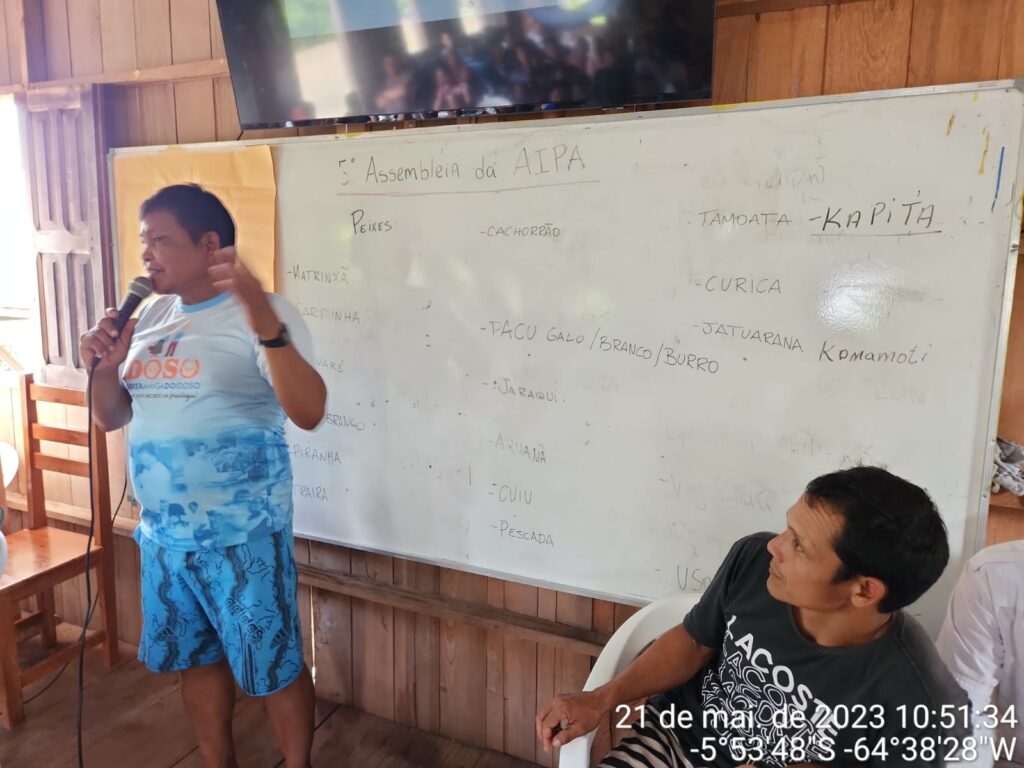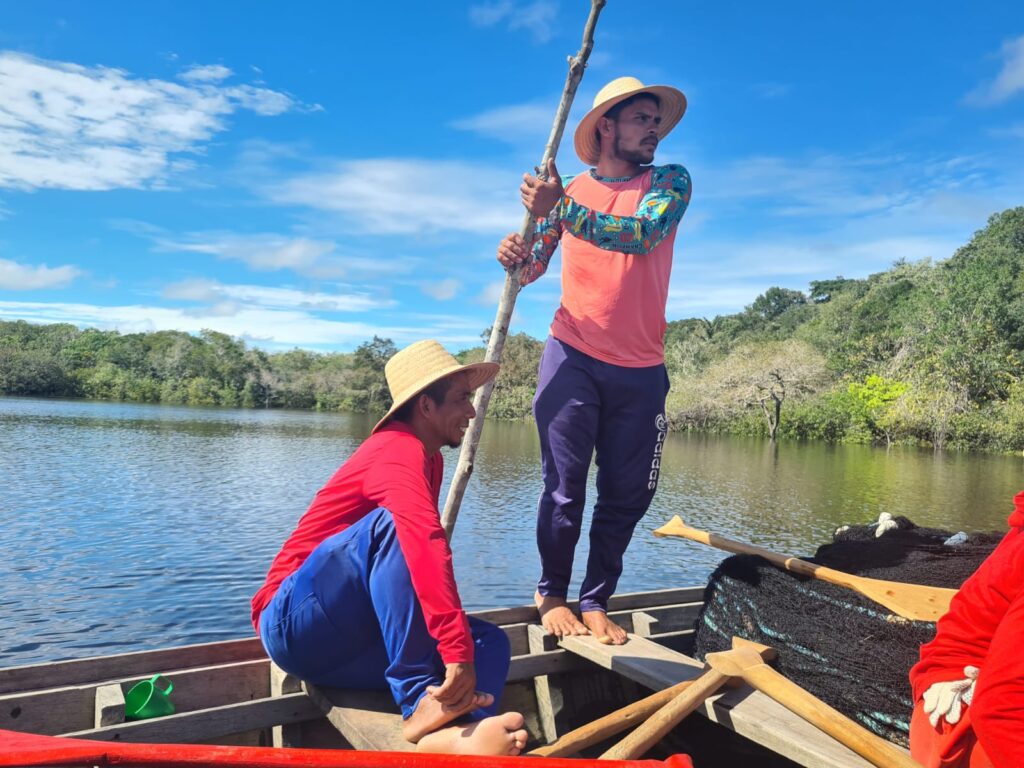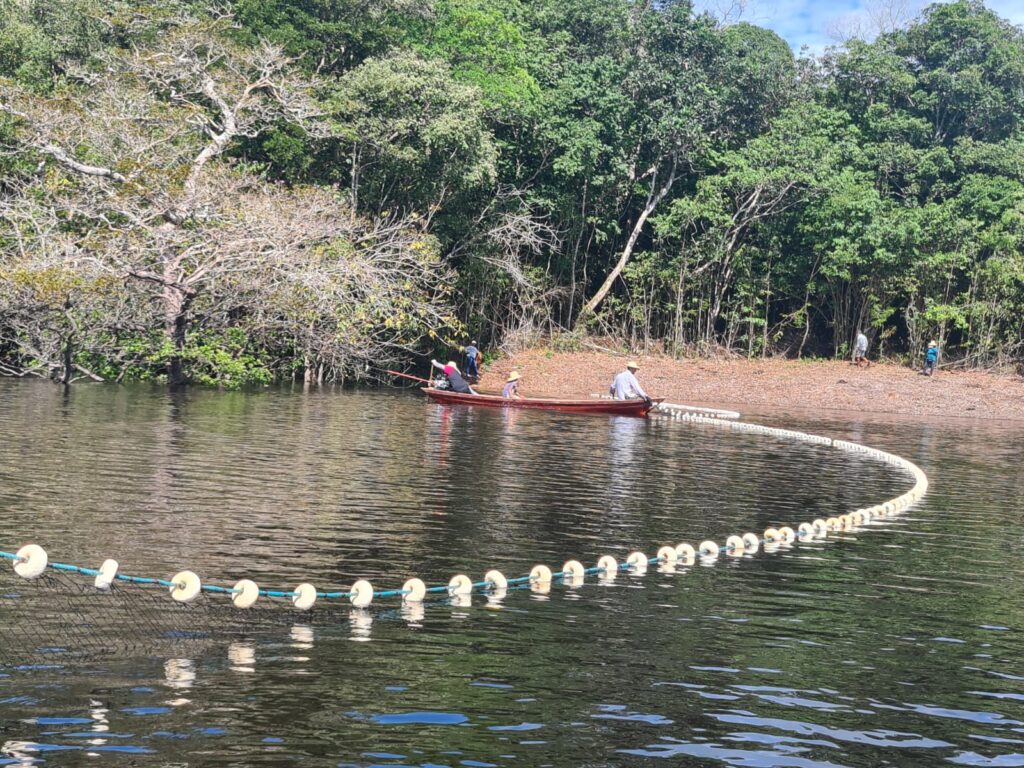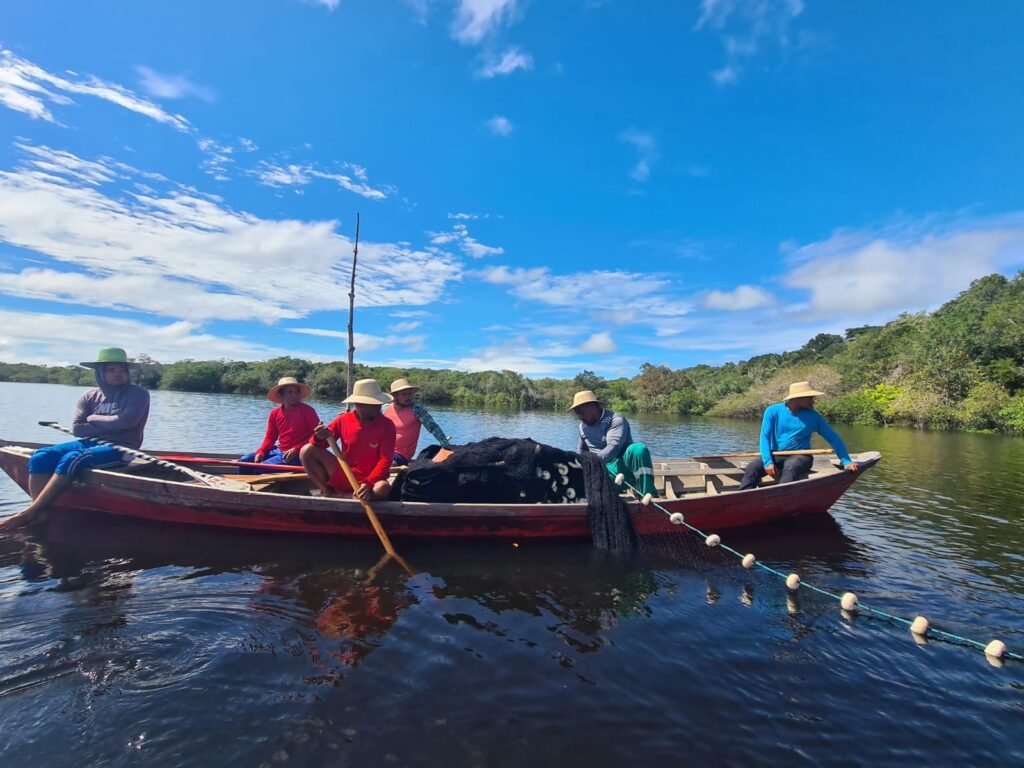Paumari people performs pilot stage of matrinxã management
A reference in the sustainable management of arapaima for more than a decade, the Paumari expanded fishing management in 2024 with the beginning of work with a new species.
By Talita Oliveira | OPAN
Since the beginning of the work with the management of the pirarucu, in 2013, the Paumari already had the desire to manage other fisheries to compose the commercialization of fish and contribute to the income of the indigenous communities. From a diagnosis made between 2022 and 2023, which analyzed the displacements of shoals in the Paumari territory, the species of commercial value and possibilities of organization of work, the people started the expansion of fisheries management, carrying out this year the first stage for the implementation of matrinxã management. The pilot initiative took place between March and April, in the Paumari Indigenous Land of Cuniuá, in Amazonas.

The diagnosis “Management of the Waters: Fisheries Management Plan of the Paumari People”, prepared by the consultant João Vitor Campos-Silva and by the team of indigenists from Operation Amazônia Nativa (OPAN), was presented, discussed and approved during the last Assembly of the Indigenous Associação Indígena do Povo das Águas (AIPA), Representative organization of the Paumari people, held in May 2023. Also during the Assembly, the operational plan for Pilot Fishing was built collectively, providing teams, logistics and supplies necessary for the activity.
The document, the implementation and all the technical monitoring was carried out with the support of Raízes do Purus, a project carried out by OPAN and sponsored by Petrobras and the Federal Government. The initiative has also supported, since 2013, the management of the arapaima carried out by the Paumari.
The pilot fishing
With the diagnosis and plan approved, a planning meeting was held in February of this year to settle the location and date of fishing, divide the teams and forward practical details, such as the boat rental and other necessary equipment for fishing. The resource use strategy, zoning, surveillance, inspection, monitoring, social organization and the sharing of profits fairly, basic points of community management, were also discussed during planning.

Pilot fishing started after the closed season, which ended on March 15th. Approximately 20 people were part of the eight work teams, divided into various functions. “Different from arapaima fishing, matrinxã fishing is a fisheries of waiting and siege of schools. In just one move they can fish hundreds or thousands of fish”, explains Felipe Rossoni, indigenist at Opan and coordinator of the Raízes do Purus project, who accompanied the fishing.
Even under conditions not yet ideal of the water level in the Tapauá and Cuniuá rivers, the Paumari people decided to put the activity into practice. After just over three weeks of work, with the monitoring of the movement of fish by the igapó, the groups forming the shoals and waiting in an attempt to carry out a catch surrounding one of the shoals, the Paumari managed to fish 865 fish, totaling approximately 1 ton of fish. The result was below expectations, but it is part of the learning process of the management of the new species. “Since the structuring of the activity, the center of the discussions was the importance of carrying out pilot fishing, in order to generate detailed information to compose the best strategies for managing stocks, catches, the operational plan for fisheries, including cost estimates for carrying out the activity. The great goal of this fishing was the learning acquired by everyone”, evaluates Felipe.

The production was taken to the city of Lábrea (AM) and quickly absorbed by the local market, being sold directly to the consumer. “Direct sales provide a closer contact with the population and also the best presentation of the work carried out, resulting in regional recognition and prestige for a work that is serious and organized”, explains José Lino Paumari, fisheries coordinator. In addition to matrinxã, smaller amounts of other species were fished and marketed, such as Pacu, Piranha, Tucunaré, Surubim and Aruanã.
As part of the management process, the Paumari people will hold an evaluation meeting to understand the positive points, what can be improved and how each part of the process (social organization, fishing, storage, transport, marketing, benefit sharing and activity monitoring) can be improved.
A pioneering initiative
The management of matrinxã, in the initial phase, makes up the fisheries management of the Paumari people from the efforts started with the management of the pirarucu. But, unlike the work with the arapaima, in which there are consolidated methods and specific regulations, the management of fisheries such as matrinxã, known as “fat fish” or “fish fish”, is a new experience and can also be exemplary for others. regions.
“The structuring of simple methodologies for monitoring shoals and their effectiveness in monitoring the stocks of these species in the territory by the fishermen themselves still needs to be improved. Through intercultural dialogues between indigenous people, riverside dwellers, technicians and researchers we will be able to arrive in practical formats, considering the different knowledge and structuring mechanisms that guarantee the sustainability of fishing”, suggests Felipe.

The management of this type of species requires a more complex approach, since fish need an area much greater than the limits of indigenous lands to fulfill their life cycle. Therefore, to think about the management of these species is also to think about the management of water and the territorial governance of the peoples and communities neighboring the Paumari lands.
In a report sent to government agencies and indigenous and community organizations in the region, AIPA explained the entire O  process, which was started with the management of arapaima. “We started back there, focusing on our internal organization and on strategies, seeking to recover the pirarucu stock until we reached levels of recovery that allowed us to apply our participatory management plan for arapaima and obtain the first quota authorization for slaughter and commercialization in 2013. After several years and all the difficulties, we achieved excellent results. We always think and dedicated ourselves to structuring management not only thinking about the arapaima, but we started the long way with it”, says an excerpt from the report.
